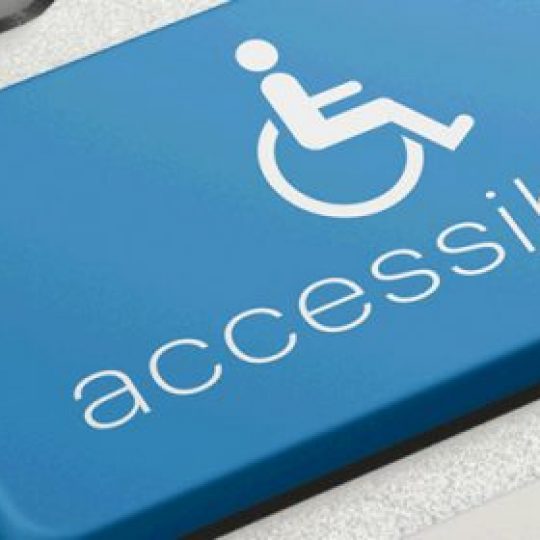The safest way to understand if your website meets these ADA standards is to follow the Web Content Accessibility Guidelines (WCAG).
Improving the accessibility of your company’s website to individuals who are visually impaired, hearing impaired, or those who must navigate by voice can be done multiple ways, including some that are not immediately obvious.
WHAT IS ADA COMPLIANT FOR WEBSITE?
Under the Americans with Disabilities Act, the ADA website compliance applies to Standards for Accessible Design. It requires that all website/electronic information and technology must be accessible to those with disabilities.
WCAG COMPLIANCE
The rise of lawsuits and uncertainty surrounding the requirements of the ADA for websites should prompt companies to take preemptive steps to protect against liability by adopting practices that ensure their websites are accessible to disabled individuals. The DOJ allows for flexibility in how places of public accommodation comply with the ADA’s requirements of nondiscrimination. The courts have relied on WCAG 2.0 and the DOJ has relied more specifically on WCAG 2.0, AA.
WCAG 2.0 OUTLINES FOUR PRINCIPLES OF ACCESSIBLE DESIGN. WEBSITES MUST BE:
Perceivable, which means users must be able to perceive the information being presented (it can’t be invisible to all of their senses).
Operable, which means that users must be able to operate the interface (the interface cannot require interaction that a user cannot perform).
Understandable, which means that users must be able to understand the information as well as the operation of the user interface (the content or operation cannot be beyond their understanding).
Robust, which means that users must be able to access the content as technologies advance (as technologies and user agents evolve, the content should remain accessible).
A robust website is one that third-party technology (like web browsers and screen readers) can rely on. Your website must meet recognized standards, such as using clean HTML and CSS.
ACCORDING TO THE HTTPS://BETA.ADA.GOV/RESOURCES/WEB-GUIDANCE THEY GIVE US SOME MORE EXAMPLES OF COMMON ISSUES ON WEBSITES THAT ARE NOT ADA COMPLIANT:
EXAMPLES OF WEBSITE ACCESSIBILITY BARRIERS
- Poor color contrast. People with limited vision or color blindness cannot read text if there is not enough contrast between the text and background (for example, light gray text on a light-colored background).
- Use of color alone to give information. People who are color-blind may not have access to information when that information is conveyed using only color cues because they cannot distinguish certain colors from others. Also, screen readers do not tell the user the color of text on a screen, so a person who is blind would not be able to know that color is meant to convey certain information (for example, using red text alone to show which fields are required on a form).
- Lack of text alternatives (“alt text”) on images. People who are blind will not be able to understand the content and purpose of images, such as pictures, illustrations, and charts, when no text alternative is provided. Text alternatives convey the purpose of an image, including pictures, illustrations, charts, etc.
- No captions on videos. People with hearing disabilities may not be able to understand information communicated in a video if the video does not have captions.
- Inaccessible online forms. People with disabilities may not be able to fill out, understand, and accurately submit forms without things like: Labels that screen readers can convey to their users (such as text that reads “credit card number” where that number should be entered); Clear instructions; and error indicators (such as alerts telling the user a form field is missing or incorrect).
- Mouse-only navigation (lack of keyboard navigation). People with disabilities who cannot use a mouse or trackpad will not be able to access web content if they cannot navigate a website using a keyboard.
WCAG 2.0 LEVELS
The Web Content Accessibility Guidelines 2.0 are organized into three levels of conformance:
Level A – the most basic web accessibility features
Level AA – deals with the biggest and most common barriers for disabled users
Level AAA – the highest (and most complex) level of web accessibility
Here is a quick reference guide (a bit long and very detailed) that you may access for the latest regulations for website ADA Compliance.
WHICH BUSINESSES ARE REQUIRED TO COMPLY WITH THE ADA?
Under Title I of the ADA, any business with at least 15 full-time employees that operates for 20 or more weeks every year is covered by the law.
Under Title III, businesses that fall into the category of “public accommodation,” such as hotels, banks, and public transportation, are also required to comply. That means the entirety of the law applies, from physical considerations to digital accommodations.
If your business falls under either Title I or Title III of the ADA and you do not believe you are compliant, consult with a disability lawyer.
INDEPENDENT LABS
I recently discovered that all independent laboratories need to be accessible to the public and also ADA compliant. After conducting some research post COVID, I discovered that the majority of these labs do not even have websites. I have spreadsheets from select states with more on this topic.
BLURRY ADA WEBSITE ACCESSIBILITY GUIDELINES
When it comes to ADA website compliance, there seem to be no clear rules. In fact, the rules for ADA compliance are very difficult to understand but that doesn’t mean businesses are let off the hook, these businesses must still provide an accessible website that accommodates users with disabilities.
THE ADA
The ADA was signed into law to protect individuals with disabilities (42 U.S.C. §§ 12101 to 12213). It was amended by the Americans with Disabilities Act Amendments Act of 2008 (ADAAA) (Pub. L. No. 110-325).
– Article consulted by Bianca Gallegos



